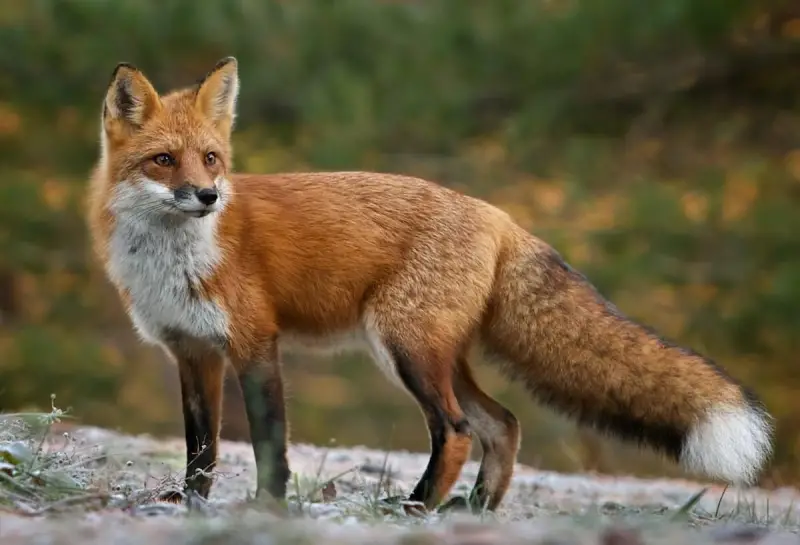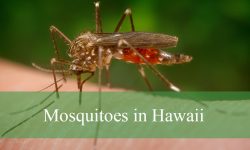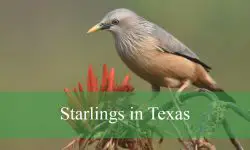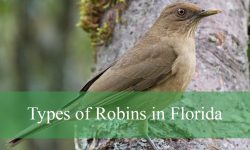Foxes are some of the most fascinating wild animals in Georgia, admired for their intelligence, adaptability, and secretive nature. These elusive mammals have evolved to survive in diverse landscapes, making them an important part of the state’s wildlife. Their keen hunting skills, cautious behavior, and unique physical traits set them apart from many other mammals that share the same habitats.
They live in a variety of environments, from deep forests and open farmlands to suburban neighborhoods, yet they are rarely seen due to their shy and nocturnal habits. Understanding where foxes live in Georgia and how to spot them in the wild can enrich your wildlife experience and encourage you to respect these remarkable creatures in their natural surroundings.
Fox Species Found in Georgia

Two species of foxes are native to Georgia: the red fox (Vulpes vulpes) and the gray fox (Urocyon cinereoargenteus). Both share similar characteristics, such as sharp senses and excellent hunting skills, yet they differ in appearance, habitat preferences, and behaviors.
The red fox is instantly recognizable by its reddish-orange fur, bushy white-tipped tail, and black legs. It is more common in open areas, where it hunts rodents and rabbits. The gray fox, with its salt-and-pepper coat, black-tipped tail, and agile body, prefers dense forests and is known for its ability to climb trees—something red foxes cannot do. Identifying which species you encounter depends largely on the type of landscape you are exploring.
Habitats of Foxes in Georgia
Forests and Wooded Areas
Georgia’s lush forests, particularly in the Appalachian region and Piedmont areas, are prime habitats for gray foxes. These areas provide dense cover, tree cavities, and plenty of small mammals for food. Fallen logs and thick underbrush serve as ideal hiding places, allowing gray foxes to remain undetected by predators and humans. Their climbing ability enables them to escape danger by retreating to tree branches, where they can rest or search for bird nests.
Farmlands and Open Fields
Red foxes dominate Georgia’s farmlands, grasslands, and open meadows. These habitats are perfect for their hunting style, as they use their keen sense of hearing to locate rodents under the ground or in tall grass. Open fields also provide space for their characteristic pouncing technique, where they leap high and land precisely on their prey. Farmers sometimes view red foxes as pests because they may hunt poultry, but they are important natural predators that help control rodent populations.
Urban and Suburban Areas
Foxes have adapted surprisingly well to suburban life, particularly in areas with nearby forests, parks, or golf courses. Both species can be spotted in suburban neighborhoods at night, especially where food sources like trash bins, compost piles, or pet food are available. While urban foxes are becoming more common, they remain wary of humans and prefer to avoid direct encounters. Spotting a fox in a suburban backyard is often a rare and exciting experience.
Coastal Regions and Wetlands
Though less common, foxes also inhabit Georgia’s coastal regions and wetlands. The marshy areas along the coast provide food sources such as crabs, fish, and small birds. Coastal habitats are especially appealing during warmer months, when food availability is higher. Dense marsh grasses and sandy dunes offer excellent hiding spots, making these foxes even harder to see.
Behavior and Daily Activity Patterns
Foxes in Georgia are primarily nocturnal and crepuscular, meaning they are most active at night and during twilight hours. During the day, they rest in dens, hollow logs, or thick vegetation. Red foxes typically dig their own dens or occupy abandoned groundhog burrows, while gray foxes rely more on natural shelters such as rock crevices or hollow trees.
Their activity levels increase during winter as they search for scarce food. Winter is also the breeding season, which runs from January through March. During this time, foxes become more vocal, emitting sharp barks, screams, and yips to communicate with potential mates or defend territories. These vocalizations often echo through forests or open fields, making foxes easier to detect by sound than by sight.
Diet and Hunting Behavior
Foxes are opportunistic omnivores, feeding on whatever is available in their environment. In Georgia, their diet consists mainly of rabbits, mice, voles, squirrels, birds, insects, and fruits. During summer and fall, they consume more fruits and berries, which are abundant in forests and farmlands.
Red foxes are skilled hunters in open areas, using their keen sense of smell and hearing to locate prey from a distance. Their hunting style involves patiently stalking before making a sudden pounce. Gray foxes, being agile climbers, often hunt in trees, raiding bird nests for eggs or young birds. In urban areas, both species may scavenge on leftovers, pet food, or small trash items, but they still prefer natural prey when available.
How to Spot Foxes in the Wild
Identifying Tracks and Signs
One of the best ways to determine whether foxes are nearby is by looking for tracks and other signs. Fox tracks resemble those of small dogs but are narrower and more oval-shaped. Red fox tracks usually measure around 1.75 to 2.5 inches long, while gray fox tracks are slightly smaller. Scat is another common sign, often twisted and containing fur, feathers, or seeds. Foxes leave scat along trails, roadsides, or field edges to mark their territories.
Trampled grass, small holes dug in search of insects, and remains of partially eaten prey are also indicators of fox activity. In winter, fresh tracks in snow or muddy soil are easier to spot, especially near wooded edges or open fields.
Listening for Vocalizations
Foxes are known for their unique vocalizations, which can help you locate them even when they are hidden. During the breeding season, you may hear high-pitched screams, sharp barks, or yipping sounds at night. These calls are often mistaken for those of other animals, but once familiar, they become a reliable way to identify fox presence.
Observing at the Right Time
The best time to observe foxes in Georgia is early morning or late evening, when they are actively hunting. Watching quietly from a distance with binoculars increases your chances of seeing one. Avoid making sudden movements or loud noises, as foxes are extremely cautious and will flee quickly if they sense danger.
Seasonal Fox Activity in Georgia
Fox activity varies with the seasons. In spring, females give birth to kits in their dens, and you may occasionally see playful young foxes outside as they begin exploring their surroundings. Summer is a period of abundant food, and foxes are often more scattered as they forage individually. Fall is marked by increased movement as they prepare for winter, storing fat and searching for secure den sites. Winter brings heightened activity due to mating, making it the best season for spotting foxes, especially after fresh snowfall.
Fox Dens and Breeding Habits
Fox dens in Georgia are usually located in well-hidden areas, such as under tree roots, rocky slopes, or thick brush. Red foxes often dig their dens, sometimes expanding old burrows made by other animals, while gray foxes rely on natural shelters. Breeding begins in late winter, with a gestation period of about 52 days. Females typically give birth to four to six kits, which stay in the den for several weeks before venturing outside.
Parental care is strong among foxes, with both parents contributing to feeding and protecting the kits. By late summer, the young foxes are independent and leave to establish their own territories.
Coexisting with Foxes in Suburban Areas
As foxes adapt to suburban environments, understanding how to coexist with them is important. Removing attractants such as unsecured garbage, outdoor pet food, and compost piles can discourage fox visits. Keeping small pets indoors at night also prevents unwanted encounters. Foxes rarely pose a threat to humans and are generally shy, so observing them from a distance is the best way to enjoy their presence without causing stress.
Conservation Status and Role in Georgia’s Ecosystem
Foxes in Georgia are not endangered and have stable populations. They play a crucial role in controlling rodent and insect populations, which benefits both natural ecosystems and agricultural areas. By preying on small mammals, they help maintain a balanced food chain. Their presence also supports scavenger species, as leftover prey becomes food for other animals.
Fun Facts About Foxes in Georgia
Foxes are more intelligent than many other wild mammals, often using clever strategies to hunt or escape predators. Gray foxes are one of the few canids in the world that can climb trees, an adaptation that allows them to access food sources unavailable to other foxes. Red foxes, on the other hand, are known for their incredible hearing, capable of detecting the sound of small animals digging underground. Despite their solitary nature, foxes are highly social during breeding season and communicate through a wide range of vocalizations and body language.
FAQs about Foxes in Georgia
Are foxes common in Georgia?
Yes, foxes are common throughout Georgia, especially the red fox and gray fox. They adapt well to different habitats, including forests, farmlands, and suburban areas.
What time of day are foxes most active in Georgia?
Foxes are most active during dawn and dusk, which are their prime hunting hours. They are generally nocturnal, resting during the day in dens or thick vegetation.
Do foxes pose a threat to humans or pets in Georgia?
Foxes rarely pose a threat to humans and avoid direct contact whenever possible. Small pets should be kept indoors at night to prevent accidental encounters.
Where are the best places to see foxes in Georgia?
The best places include forest edges, open fields, and wooded suburban parks. Watching quietly at dawn or dusk increases your chances of spotting one.
What do foxes eat in Georgia?
Their diet includes rabbits, mice, squirrels, birds, insects, and seasonal fruits. In suburban areas, they may also scavenge for leftover food but prefer natural prey.
Conclusion
Foxes are remarkable creatures that thrive in Georgia’s diverse landscapes, from dense forests and open fields to suburban backyards. Their adaptability, intelligence, and elusive nature make them fascinating to observe for wildlife enthusiasts. By understanding where they live and how to spot them in the wild, you can gain a deeper appreciation for these animals while respecting their natural behaviors. Whether you are hiking through a forest at dawn or quietly watching an open field at dusk, catching a glimpse of a fox in Georgia is a rewarding experience that reminds us of the beauty and complexity of the state’s wildlife.






